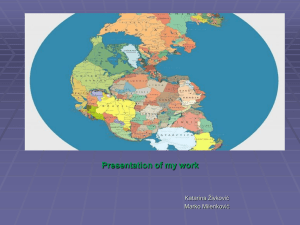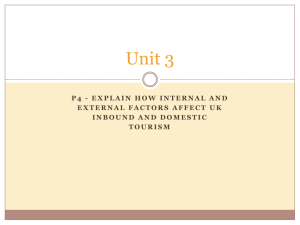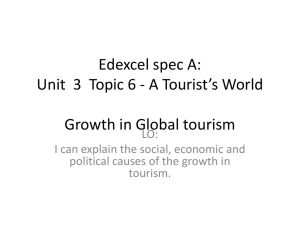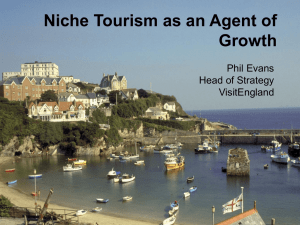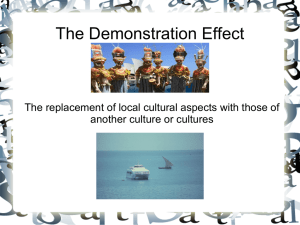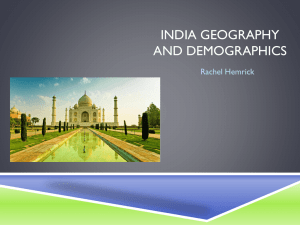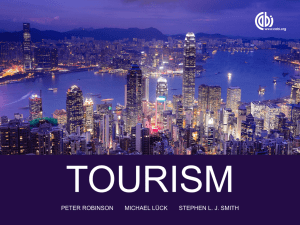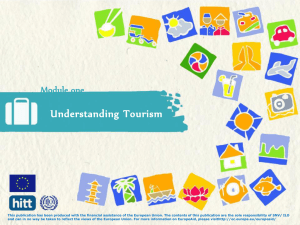Melanie-Smith
advertisement
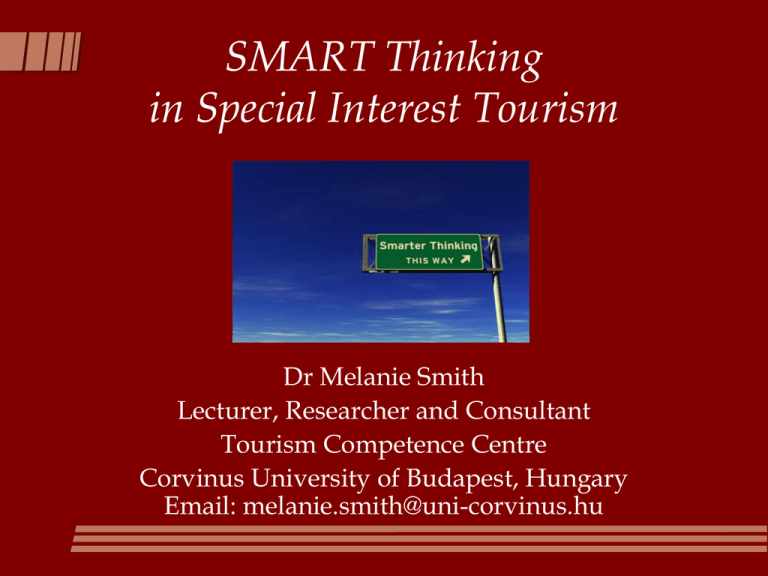
SMART Thinking in Special Interest Tourism Dr Melanie Smith Lecturer, Researcher and Consultant Tourism Competence Centre Corvinus University of Budapest, Hungary Email: melanie.smith@uni-corvinus.hu What is SMART Thinking? S is for...... Sustainability Special Interest And not so much..... What is SMART Thinking? M is for...... More – Quality – Originality – Diversity – Value for money What is SMART Thinking? A is for...... Ask – What do tourists want? What is SMART Thinking? R is for...... Respond – Give tourists what they want What is SMART Thinking? T is for...... Trends – Creativity – Experience Special Interest Tourism „Travelling with the primary motivation of practising or enjoying a special interest. This can include unusual hobbies, activities, themes or destinations, which tend to attract niche markets” (Smith et al., 2010) Special interest tourism tends to be more sustainable or ethical than mass tourism. Smaller group sizes (typically 10-15 tourists), more educated, experienced visitors, more authentic environmental or cultural experiences are the main focus of the trip. (Douglas et al., 2001) SPECIAL INTEREST or Niche Tourism (adapted from Novelli, 2005) Cultural Environmental Rural Urban Others Heritage Nature and Farm/barns Business Photographic Tribal wildlife Camping Conference Small cruise Religious Ecotourism Wine/ Exhibition Volunteer Educational Adventure Gastronomy Sport Dark Genealogy Alpine Sport Gallery Youth Geotourism Festivals and Art Transport Coastal events Arts and crafts MORE: Originality – Food (e.g. cookery courses, celebrity chefs, fusion cuisine, healthy eating, slow food) – Culture (e.g. everyday life, indigenous peoples, ethnic diversity) – History (e.g. story-telling, living history, costume drama, role play) – Festivals which are more than just spectatorship (e.g. music, dance & crafts workshops, kids’ corners, circus skills, games, etc) – Arts and crafts (e.g. making objects, painting them, dying & weaving) MORE Diversity Representation of multiple cultures & stories in museums Ethnic festivals (e.g. Jewish, Roma) World music (e.g. WOMAD) Guided walks (e.g. Jewish quarter) Special events (e.g. Gay Pride) Carnivals & Melas (i.e. Indian Festivals) Circuses (e.g. Chinese, Russian, Cirque du Soleil) International & fusion food festivals Ethnic shopping (e.g. Chinese stores, markets) Guest markets (e.g. German, French) ASK: What do Tourists want? Tourists require ‘edutainment’ Tourists want to touch, taste, smell, hear, as well as see Tourists like to experience real, authentic & everyday places & people Tourists want to discover something unique Tourists look for a sense of place & character Tourists enjoy animation & a good atmosphere Tourists need to be engaged & absorbed Tourists want to be surprised & delighted Tourists sometimes need to be shocked & provoked! RESPOND: New Product Development Health & Wellness Tourism Body-Mind-Spirit combined packages Products for new markets (e.g. gay, para-tourism) Holistic cruises De-tox/diet retreats Wine or vinotherapy Art/music therapy Animal therapy TRENDS: Wellness Tourism Shift back to indigenous & natural products & treatments Need for greening or spas & ecofriendliness More holistic tourism Growth of global wellness hotels More wellness areas at music festivals Increase in gastro-travel More fusion treatments (e.g. Aquaveda, Yogalates) Flexible delivery of treatments (e.g. own home, workplace, online, even in bars!) TRENDS: Cultural Tourism Historic spas (e.g. special events) Architecture tours (e.g. Gaudi trail, Barcelona) Film & media (e.g. film sets, studio tours, film-making, links to popular programmes, interaction with celebrities) Everyday life (e.g. homestays, pub crawls led by locals) Artist-led activities (e.g. interactive, creative tourism) Youth culture (e.g. music festivals, chill out festivals) TRENDS: Creative Tourism „Learning a skill on holiday that is part of the culture of the country or community being visited” UNESCO Creative City Network (Literature, Cinema, Music, Craft and folk art, Design, Media arts, Gastronomy) Enjoying attractions and activities which are linked to the creative industries, and which tend to be interactive or experiential in nature. This might include industries such as film and TV, fashion, design, and architecture. (Smith, 2009) (Richards & Raymond, 2000:16) „Travel directed toward an engaged and authentic experience, with participative learning in the arts, heritage, or special character of a place, and it provides a connection with those who reside in this place and create this living culture.” (UNESCO, 2006:3) TRENDS: ‘Fringe’ Tourism Many tourists, especially repeat visitors seeking alternative experiences based on authenticity of local areas, i.e. ‘fringe tourism’ (Maitland, 2007) Ethnic quarters or ’ethnoscapes’ so popular with visitors that they regularly feature in tourist brochures as cultural attractions Ethnic festivals and carnivals ; world music festivals Gay tourism (gay index closely connected to ‘creativity’) Summary of SMART Thinking S is for sustainable, special interest tourism M is for more quality, originality, diversity, value for money A is for ask what do tourists want? Undertake research R is for respond to tourists’ needs, develop new products and services accordingly T is for trends – identifying those trends which influence tourists’ motivation and behaviour Conclusions Traditional approaches to tourism are too limited Need for more creative & innovative approaches Tourists looking for new & unique experiences Old products can be given new life New trends can provide more interesting experiences for a wider range of people Focus on different needs of domestic, international, first-time, & repeat visitors Consider issues relating to age, gender, & ethnicity Different nationalities may be receptive to different products & approaches (growth markets in future maybe Chinese, Indian.....) Thank you for your attention.......


